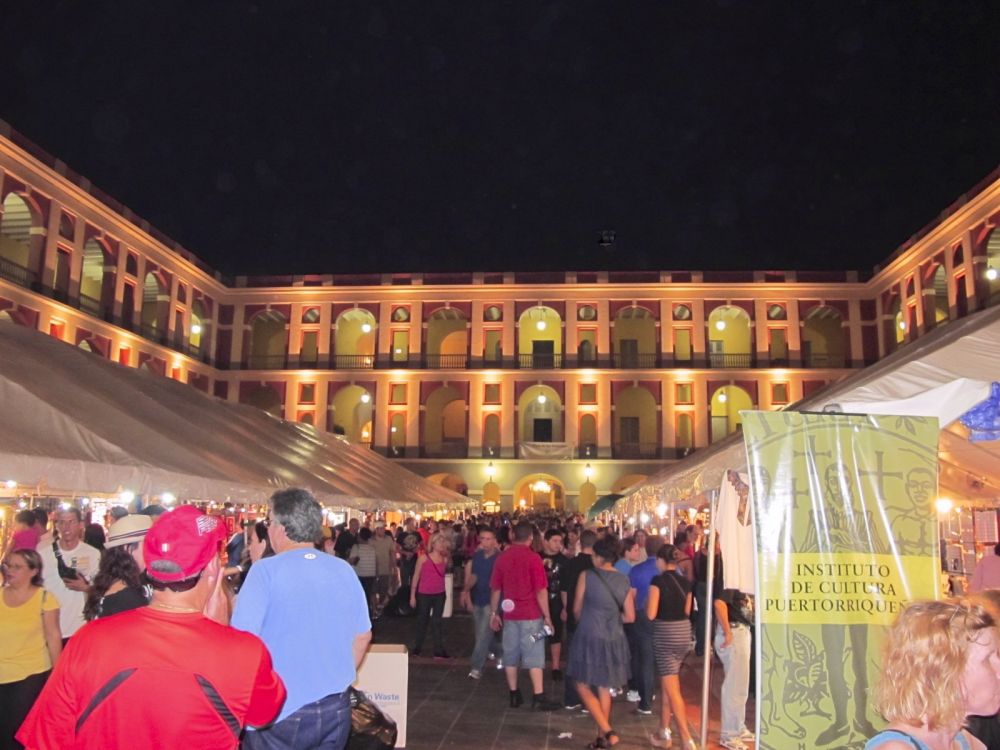San Sebastián Street Festival 2017 (01/19-01/22)

After Christmas Day, Puerto Rico and most of Latin America celebrates Epiphany, or Día De Los Reyes Magos, on January 6th. After more gift-giving, Puerto Ricans celebrate what they call Octavitas the week after – or some of the last festivities of their long Christmas, which start right after Thanksgiving in November. The truth of the matter, though? The official end of the holidays in the Boricua calendar is the San Sebastian Festival.

Typically celebrated on the third week of January (Thursday – Sunday), the annual 4-day festival takes place in and around Calle San Sebastián in Old San Juan. Many of the historical cobblestone streets are closed to motorized vehicles; artisans and food vendors set up shop; local musicians and general public alike bring their instruments and sing bomba and plena numbers. In a nutshell: all aspects of Puerto Rican culture convene in what most regard as the best festival of the island. This is the perfect crash course for tourists eager to learn more about the Indian Taíno, African, and Spanish heritage.
History of the San Sebastian Festival
San Sebastián, or Saint Sebastian, was an early saint and Christian martyr – one of the many victims of the persecution under the Roman emperor Diocletian in the Third Century AD. As a Spanish (Catholic) colony, the day of Saint Sebastian was commemorated with a feast on January 20th.
The first-ever San Sebastian Festival only lasted one day (the feast day) and was organized by one of the priests of the San José Church, which is located right on Calle San Sebastián in Old San Juan, in the 1950’s. However, the festival wouldn’t be popular until after a hiatus of about 20 years.
In the 1970’s, the San Sebastian Festival was kick-started once more and extended to a 4-day affair full of art, live mulato music, dancing, and mestizo food. People line up on balconies, bring their instruments, buy local crafts, and party until the wee hours of the morning. Think of it as the Puerto Rican Mardi Gras, but with a mix of African, Taíno Indian, and Spaniard traditions instead.

San Sebastian Festival: The Setup + Travel Tips
Nowadays, the typical SanSe (nickname of the festivities) setup is as follows:
– Each day of the San Sebastian Festival is divided in 2 parts: Day and night festivities. Most colorful parades, cabezudos, and costumes march down the cobblestone streets in the afternoon (approx. 5pm), making it the ideal time to bring the entire family. After sunset, college students start to pour in with their wonderful instruments, lighting up their streets with plena and bomba music and everyone walking by joins the party!
– After around 8 PM, the live (free!) concerts tend to begin. The common venue is Plaza Quinto Centenario, but may vary from year to year.

– Shopping may be done either during the day or night. However, vendors may rotate, so if you find something you like, buy it then.
– Along Calle San Sebastián and (mainly) El Cuartel de Ballajá, local artists and artisans sell their crafts and paintings, including jewelry, pottery, and handmade wooden sculptures. However, it is recommended you walk all over Old San Juan, as they may set shop anywhere they find a space!
– Drinking on the streets is usually permitted, but along certain perimeters. The police erect barricades and clearly mark the areas, so you shouldn’t worry. Needless to say, the specials are incredible and the atmosphere is extremely local.
– Concerts must end by 11pm.
– Bars must close by midnight.
– Noise-makers – Vuvuzelas and whistles are not permitted. Anyone using a vuvuzela will be fined $1000.
– Drones are not permitted.
The Department of Transportation (DTOP) is expecting more than half a million people to attend the festivities in Old San Juan over the four days. It is very highly recommended that you use public transportation versus trying to drive into Old San Juan, leave your car at home!!!
Click on this Link for invormation on Public Transportation during the festival. he AMA buses and other Guaguas (multi person vans) will operate from the Sagrado Corazón station into Old San Juan from 3p until 10pm on Thursday and Friday, 9am until 10pm on Saturday, and from 9am until 9pm on Sunday. The AMA buses and guaguas will operate from Old San Juan to the Sagrado Corazón station until 1am on Thursday and Friday, until 2am on Saturday and 12 midnight on Sunday. The other buses and guaguas will operate similar hours.
At both Sagrado Corazon and Bithorn Stadium there will be parking at $5 per car, (which includes a round trip ticket for the driver). The bus transportation for the other passengers in the car will cost $1 RT. Taxis will also be there taking people for $5 pp.
The Tren Urbano will operate according to their regular hours.
There will be taxi service at the Convention Center for $5 pp. The parking there is $8 per car.
NOTE- ALL PUBLIC TRANSPORTATION VEHICLES (taxis, buses, guaguas) WILL DROP YOU OFF ON THE NORTH SIDE OF THE CAPITOL BUILDING> YOU HAVE TO WALK FROM THERE. For the way home- ALL TRANSPORT LEAVES FROM CONSTITUTION AVENUE, ON THE SOUTH SIDE OF THE CAPITOL BUILDING.
The ferry (Acuaexpreso) will operate from Cataño to Old San Juan (fee 50¢) from 6am on Thursday and Friday and starting at 8am on Saturday and Sunday. The ferries will operate from Old San Juan to Cataño until 1am on Thursday, until 2 am on Friday and Saturday, and until 12 midnight on Sunday.
Photo Credits: My Destination Puerto Rico
